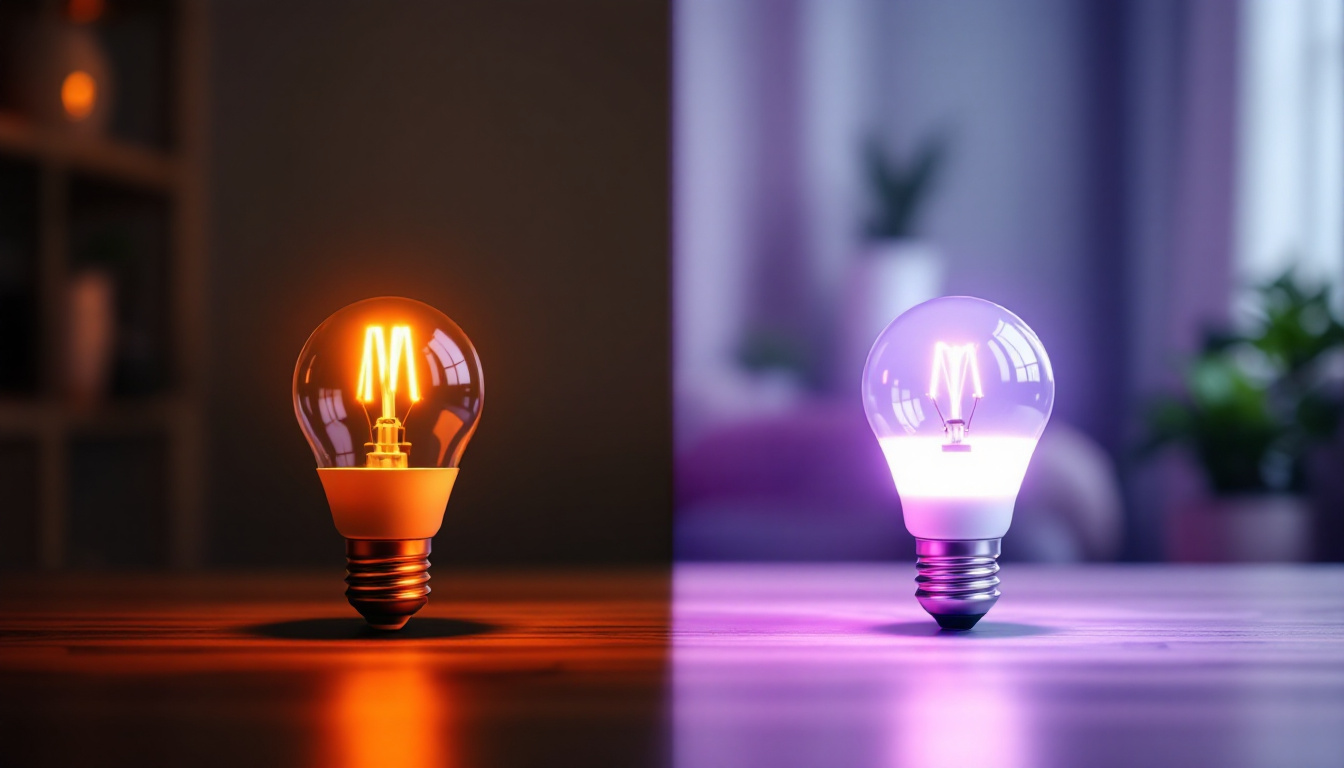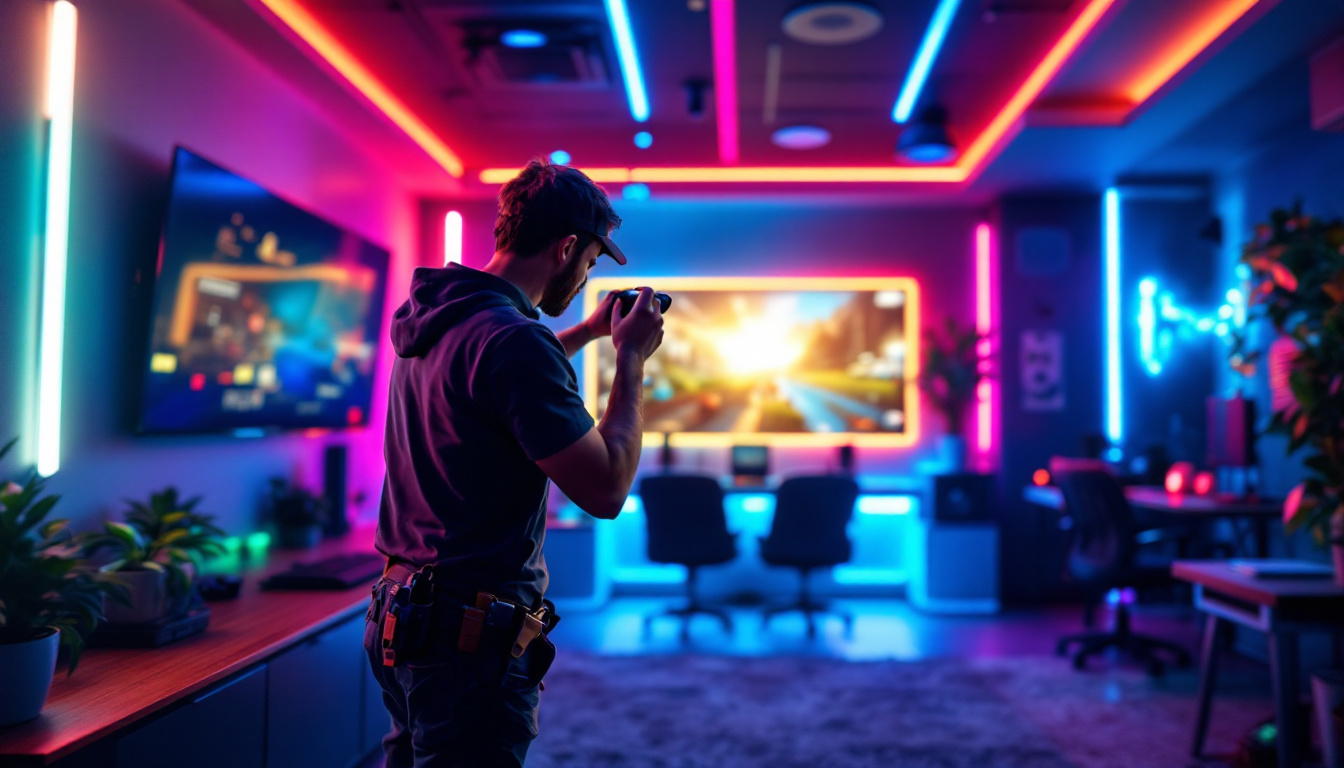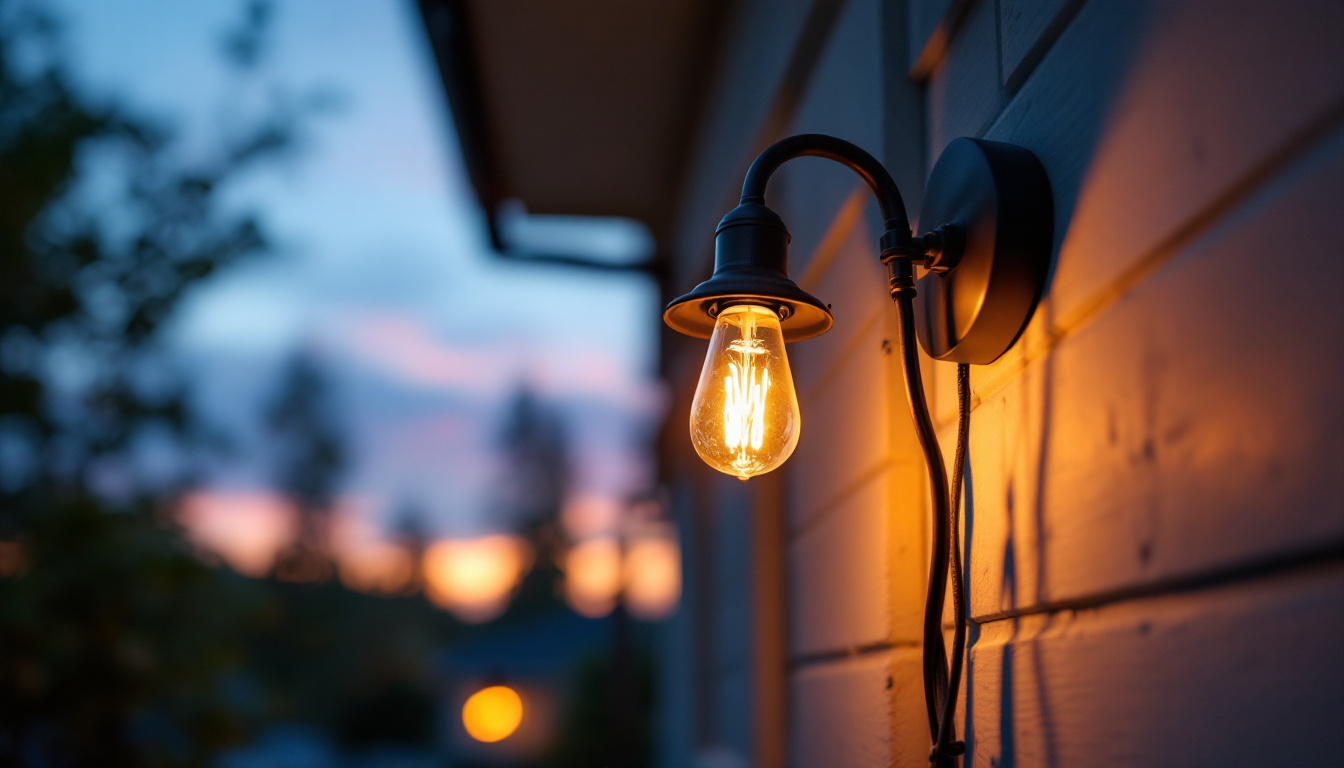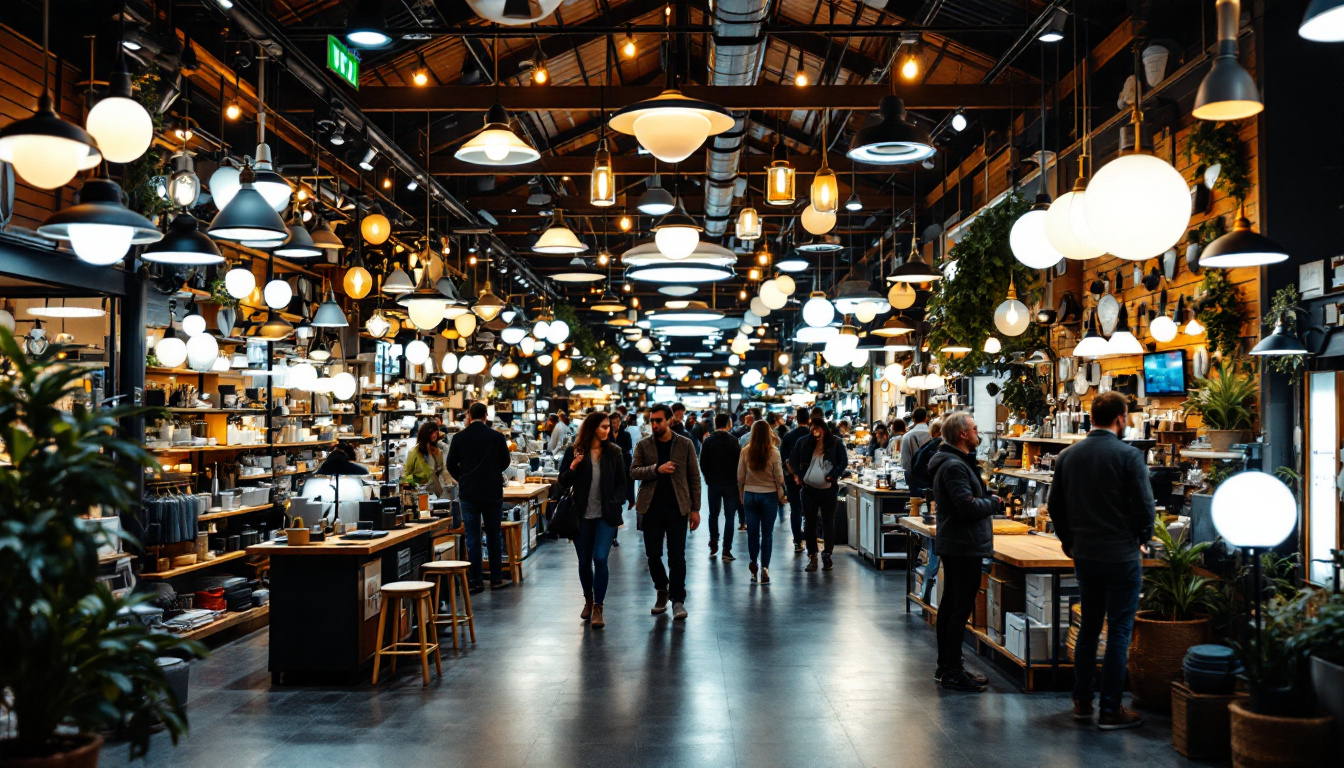
In the realm of modern lighting solutions, two technologies often come to the forefront: LED (Light Emitting Diode) and fluorescent lighting. Each has its unique characteristics, advantages, and applications. Understanding the fundamental differences between these technologies is essential for lighting contractors aiming to provide the best solutions for their clients.
LED bulbs are solid-state lighting devices that convert electricity directly into light. They are known for their energy efficiency, longevity, and minimal heat production. Unlike traditional incandescent bulbs, which use a filament, LEDs utilize a semiconductor to emit light when an electric current passes through it. This technology allows for a wide range of applications, from residential lighting to commercial and industrial uses. Additionally, LEDs come in various colors and color temperatures, providing flexibility in design and ambiance. Their compact size also enables innovative lighting designs, such as recessed lighting and accent lighting, which can enhance the aesthetic appeal of any space.
Fluorescent lights operate on a different principle. They use a gas-filled tube coated with phosphor, which emits visible light when an electric current passes through the gas. Fluorescent bulbs are often more energy-efficient than incandescent bulbs, making them a popular choice for various settings, including offices and retail spaces. However, they have a shorter lifespan compared to LEDs and can contain hazardous materials, such as mercury. Despite these drawbacks, fluorescent lights are still favored for their ability to produce a bright, even light that is ideal for task-oriented environments. They are available in different shapes and sizes, including compact fluorescent lamps (CFLs), which are designed to replace traditional incandescent bulbs while providing similar light output but with significantly lower energy consumption.
The debate over which technology was invented first often leads to confusion, especially among those new to the lighting industry. While fluorescent lighting has been around for a considerable time, the development of LED technology has evolved significantly over the years.
Fluorescent lighting emerged as a more energy-efficient alternative to incandescent bulbs. Its widespread adoption in commercial and residential applications marked a significant shift in lighting technology. The ability to produce bright light while consuming less energy made fluorescent bulbs a favorite among contractors and builders alike. The first practical fluorescent lamp was developed in the 1930s, and its popularity soared during the post-World War II era as businesses sought ways to reduce energy costs. Furthermore, the introduction of compact fluorescent lamps (CFLs) in the 1980s brought this technology into homes, offering consumers a longer-lasting option that could fit into standard light fixtures. The environmental benefits of reduced energy consumption and lower heat output also contributed to the growing acceptance of fluorescent lighting in both public and private spaces.
LED technology, on the other hand, has seen rapid advancements in recent years. Initially, LEDs were limited to indicator lights and small displays. However, breakthroughs in technology have allowed for the development of high-output LEDs that can replace traditional lighting solutions. The versatility and efficiency of LEDs have made them increasingly popular in various applications, including street lighting, automotive lighting, and even in horticulture. As the manufacturing processes improved, the cost of LED bulbs decreased significantly, making them accessible to a broader audience. Additionally, the lifespan of LEDs, often exceeding 25,000 hours, means that consumers can enjoy substantial savings over time, both in terms of replacement costs and energy bills. The ability of LEDs to emit light in a range of colors without the need for filters has also opened up new avenues for creative lighting design in architecture and art installations, further solidifying their place in modern lighting solutions.
For lighting contractors, understanding the advantages of LED lighting can significantly impact project planning and client satisfaction. LEDs offer numerous benefits that make them a compelling choice for many applications.
One of the most significant advantages of LED lighting is its energy efficiency. LEDs consume significantly less power than both incandescent and fluorescent bulbs, which translates to lower energy bills for clients. This efficiency is particularly beneficial in commercial settings, where lighting can account for a substantial portion of energy consumption. In fact, switching to LED lighting can lead to energy savings of up to 80%, allowing businesses to allocate those savings toward other operational needs or investments.
LEDs have an impressive lifespan, often lasting up to 25 times longer than traditional incandescent bulbs. This longevity reduces the frequency of replacements, leading to lower maintenance costs for clients. Additionally, LEDs are more durable than fluorescent bulbs, which can be fragile and prone to breakage. This durability makes them ideal for various environments, including industrial settings and outdoor applications. Moreover, the robust construction of LEDs means they can withstand extreme temperatures and vibrations, making them suitable for use in challenging conditions, such as in warehouses or on construction sites.
From an environmental perspective, LEDs are a more sustainable option. They do not contain hazardous materials, such as mercury, which is found in fluorescent bulbs. Furthermore, the energy savings associated with LED lighting contribute to a reduction in greenhouse gas emissions, making them a more eco-friendly choice for contractors looking to promote sustainable practices. The reduced carbon footprint of LED lighting not only benefits the environment but also aligns with the growing consumer demand for green solutions. As more clients become environmentally conscious, offering LED lighting options can enhance a contractor’s reputation and appeal in the marketplace.
Another compelling advantage of LED lighting is its versatility and design flexibility. LEDs come in a variety of shapes, sizes, and color temperatures, allowing contractors to create customized lighting solutions that meet specific aesthetic and functional requirements. Whether it’s for residential spaces, retail environments, or outdoor landscapes, the adaptability of LED technology enables innovative lighting designs that can enhance the ambiance and usability of any space. Additionally, with the advent of smart LED technology, contractors can offer clients advanced features such as dimming capabilities, color changing options, and integration with smart home systems, further elevating the user experience.
While fluorescent lighting has its advantages, it also presents several challenges that contractors must consider when recommending lighting solutions to clients.
Compared to LEDs, fluorescent bulbs have a shorter lifespan, typically lasting around 7,000 to 15,000 hours. This shorter lifespan can lead to increased maintenance costs and inconvenience for clients, particularly in commercial settings where lighting is crucial for operations.
The presence of mercury in fluorescent bulbs poses environmental and health risks. Proper disposal and recycling are essential to prevent contamination. This concern has led to stricter regulations regarding the use and disposal of fluorescent lighting, making it less appealing for environmentally conscious clients.
As the lighting industry continues to evolve, leveraging LED technology can provide contractors with a competitive edge. Understanding how to implement LED solutions effectively can lead to enhanced client satisfaction and long-term relationships.
One of the key advantages of LED technology is its versatility. Lighting contractors can customize LED solutions to meet the specific needs of their clients. This customization can include adjusting color temperatures, brightness levels, and even integrating smart technology for enhanced control and efficiency.
Smart lighting solutions are becoming increasingly popular, allowing clients to control their lighting systems through mobile apps or voice commands. By incorporating smart LED technology, contractors can offer clients enhanced convenience and energy savings. This integration can be particularly appealing for residential clients looking to modernize their homes.
While the initial investment in LED technology may be higher than traditional lighting solutions, the long-term cost savings can be substantial. Contractors must communicate these benefits effectively to clients to justify the upfront costs.
Calculating the return on investment for LED lighting can help clients understand the long-term savings associated with their purchase. By providing estimates on energy savings, reduced maintenance costs, and longer lifespan, contractors can demonstrate the value of investing in LED technology.
Many regions offer incentives and rebates for businesses and homeowners who switch to energy-efficient lighting solutions. Contractors should stay informed about available programs to help clients take advantage of these financial benefits. This knowledge can further enhance the appeal of LED solutions and foster trust between contractors and clients.
The lighting industry is continuously evolving, with new technologies and trends emerging regularly. Staying informed about these developments can help contractors provide cutting-edge solutions to their clients.
As research and development in LED technology continue, advancements are expected to enhance performance, efficiency, and versatility. Innovations such as tunable white LEDs, which allow users to adjust the color temperature, and advancements in color rendering will provide even more options for contractors and clients alike.
As the world moves toward sustainable energy solutions, integrating LED lighting with renewable energy sources, such as solar power, is becoming increasingly viable. Contractors who embrace this trend can offer clients eco-friendly lighting solutions that align with their sustainability goals.
In the ever-evolving landscape of lighting technology, understanding the differences between LED and fluorescent lighting is crucial for lighting contractors. By leveraging the advantages of LED technology, contractors can provide clients with energy-efficient, durable, and environmentally friendly solutions.
As the industry continues to advance, staying informed about emerging trends and technologies will empower contractors to make informed decisions that benefit both their clients and the environment. Ultimately, the choice between LED and fluorescent lighting should be guided by the specific needs of each project, ensuring that clients receive the best possible lighting solutions for their spaces.
Ready to elevate your lighting solutions with the efficiency and sustainability of LED technology? At LumenWholesale, we specialize in providing contractors with the highest quality, spec-grade LED lighting products at unbeatable wholesale prices. Say goodbye to local distributor markups and hello to a vast selection of reliable lighting options that meet the strictest industry standards. With free shipping on bulk orders, you can secure premium lighting for your projects at the best value, ensuring your clients enjoy the benefits of modern, cost-effective lighting solutions. Don’t compromise on quality or price. Discover the best in wholesale lighting at LumenWholesale and make the smart choice for your business and the environment.

Explore how LED lighting transforms gamerooms and revolutionizes projects for lighting contractors.

Explore the key challenges lighting contractors face when installing outdoor lights with bulbs.

Discover how incorporating exterior black lighting can transform your business.

Discover why purchasing outdoor lighting in bulk from local distributors might not be the best choice.